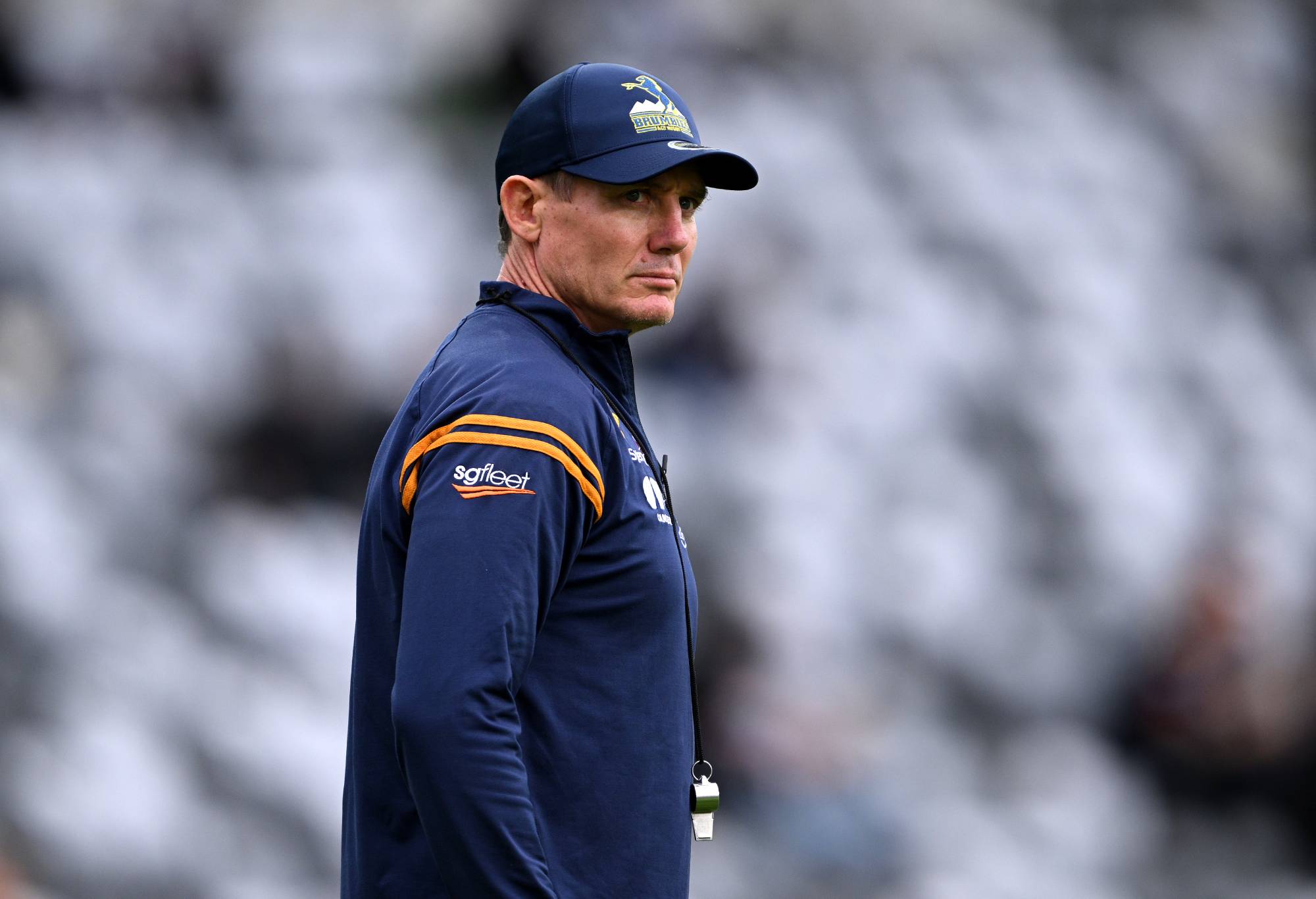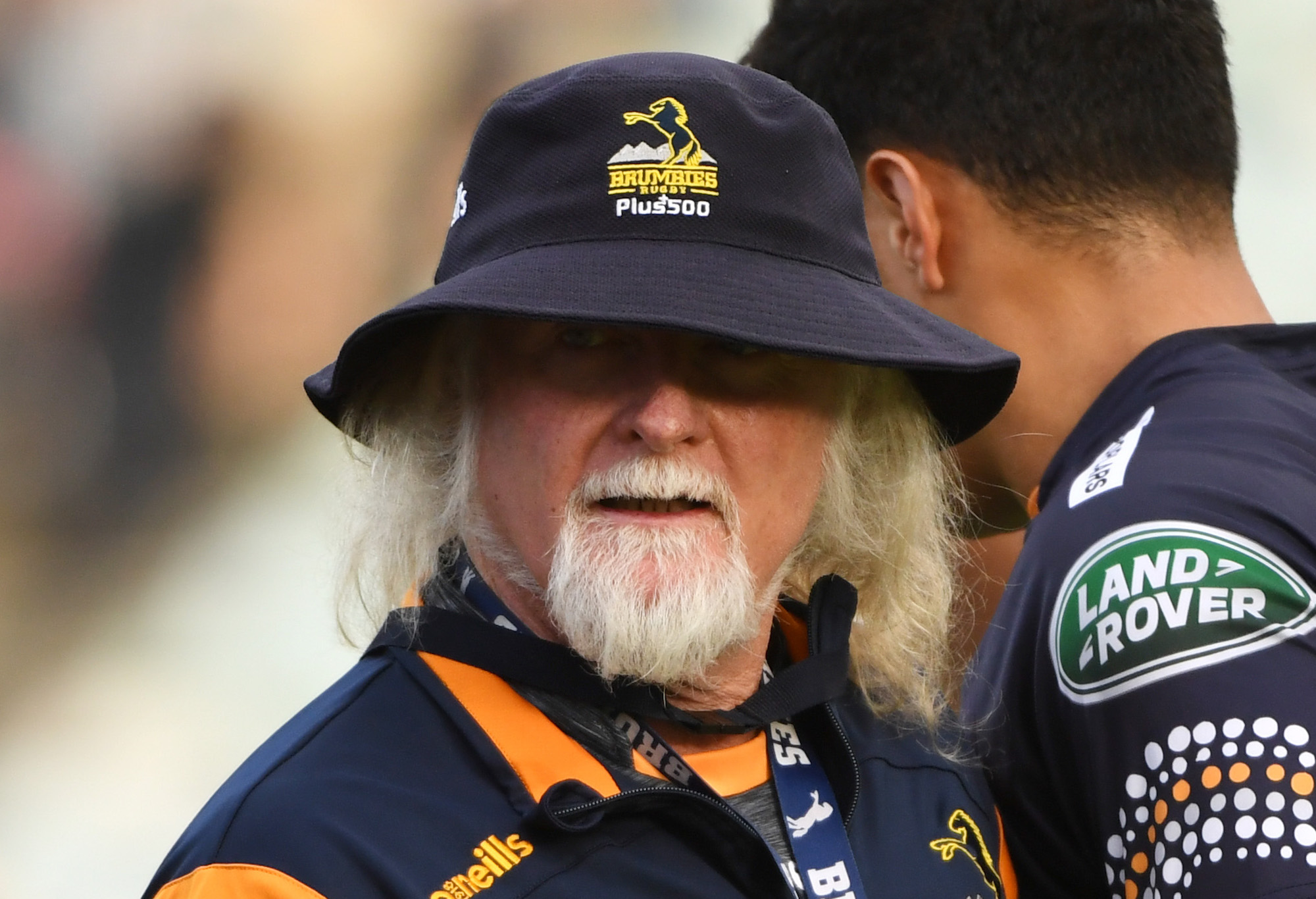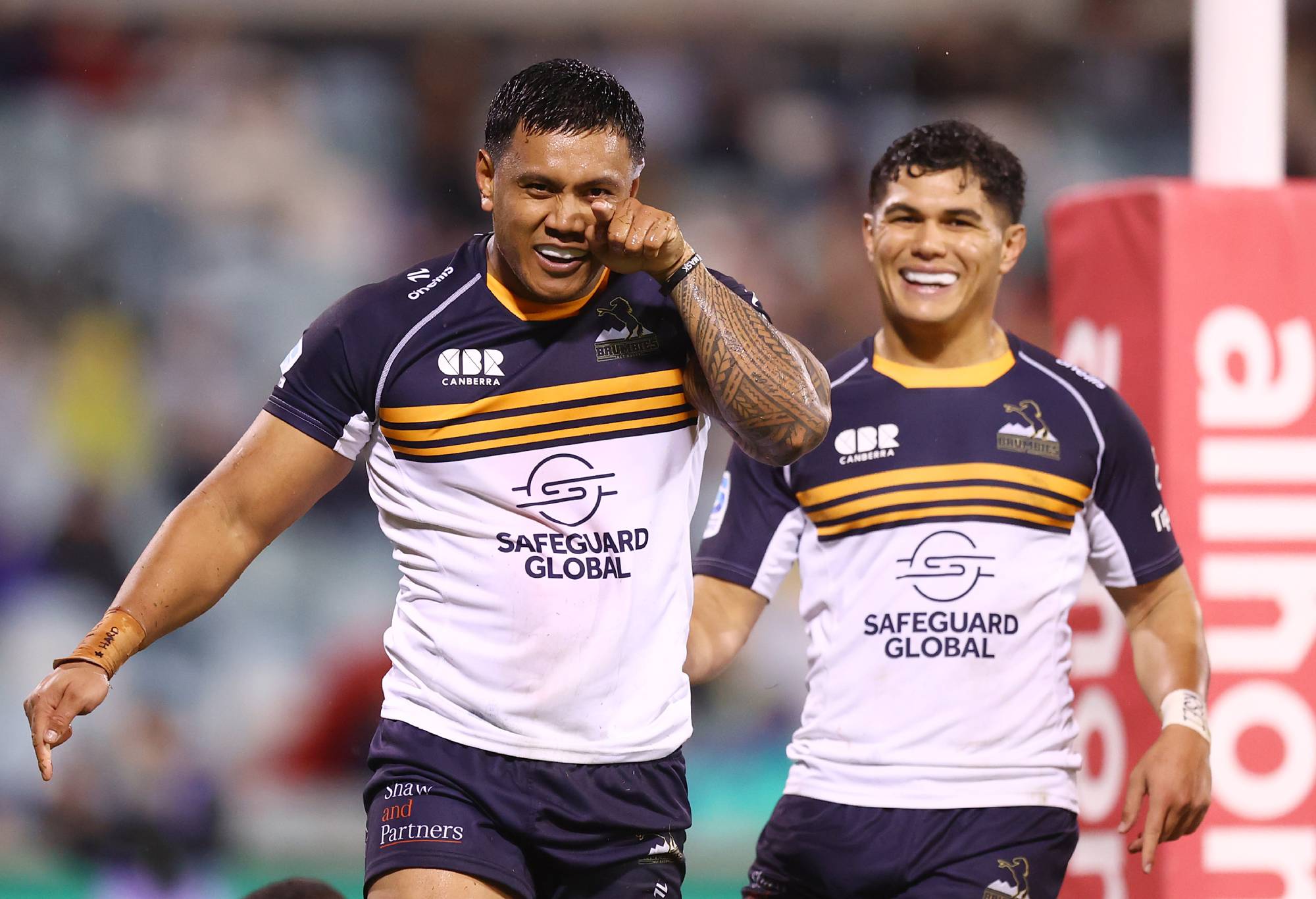The ACT Brumbies’ struggles against New Zealand opposition in 2024 has been both a shock.
The side is heavily laden with Wallabies and has strong cohesion from years gone by, and what makes their struggles against the top Kiwi sides all the more worrying is that in recent years they’ve been the only Australian side to consistently challenge and beat their trans-Tasman cousins.
The 46-12 thrashing against the Chiefs in Melbourne for Super Round was perhaps more palatable considering their below standard defensive figures in two consecutive weeks.
In -match conference, head coach Stephen Larkham said their preparation had lacked “intensity” leading into the Chiefs game but maintained the large points differential was not system error but player error.
The head coach had referenced the Chiefs prep week in his press conference before heading to Auckland for the Blues game, saying that the preparation had been “chalk and cheese” with the Chiefs’ week, with a “good intensity” at training.

Brumbies coach Stephen Larkham has a massive job getting his side back on track against the Hurricanes on Saturday. (Photo by Joe Allison/Getty Images)
Good preparation aside, they were clinically picked apart by Vern Cotter’s unyielding Blues side 46-7.
The common thread in both games put simply was physical domination on both sides of the ball.
To expand on this, the Brumbies’ new defensive system has big issues in the way of uptake and execution.
Issues seen in the Chiefs game like an inability to consistently contest the breakdown and to slow down opposition ball were themes seen in the Blues game.
But how has 12 months and an almost identical roster of Wallabies gone from a side of rough-and-ready tough men to a side that gets blown off the park by more than 30 points?
The single biggest change in the last 12 months is a new defensive system.
Under Laurie Fisher they had a connected line speed defence, whereas this is their first year with Ben Mowen’s rush defence.
Both systems have merit, and one is not necessarily better than the other, however, the stark difference between the two Brumbies’ defences aside from the system type itself, is execution.
From 1-23 the Brumbies are not defending as a unit, some players are employing the old connected line speed whilst others are rushing out the line and some are doing something in between.

New Wallabies defence coach Laurie Fisher has finished up with the Brumbies. (Photo by Tracey Nearmy/Getty Images)
The pillars of defence are often the same regardless of the system and those pillars are not being maintained.
Making a square on tackle ensures strength in the hit, two in the tackle increases the likelihood of a dominant tackle and it also creates an extra body for attackers to clean, creating a slower ruck.
Tackling low arrests momentum and creates a pilfer opportunity, line speed means you catch the attack behind the gainline, nominating who you are tackling and getting to one’s feet quickly after completing a tackle means more bodies in the defensive line.
However, all these building blocks of what makes a defence are void if the team isn’t operating within the same system, and the Brumbies are not yet working as a unit.
Firstly, let’s highlight the inconsistencies in the Brumbies’ execution of their rush defence.
In both examples, in both games, the Brumbies are not getting off their line.
A rush defence ceases to function without fast line-speed, in these examples it is evident that they are sitting on their heels and are not unified in their approach.
There are glimpses of how the system could and perhaps should operate but they are too few and far between.
The next biggest issue is their body height, and it appears to be a issue that is part of the system.
The Blues were regularly lower than the Brumbies in attack and defence, meaning they made dominant contact almost every time.
In attack the Blues would get underneath Brumbies and fight to and on the ground with their cleaners latching-on either just before or at the point of contact, effectively killing the contest.
Although the legality of this could be questioned, the referee did not and so the Brumbies should have adapted.
As seen in defence the Blues players got square on with the Brumbies players and made dominant low tackles, robbing them of gainline metres and an easy clean.
The final system issue which is hurting the Brumbies is a seemingly non-existen strategy to attack opposition breakdowns.
Rarely in the game against the Chiefs or the Blues was there any concerted or effective efforts to slow ruck speed, often the Brumbies players just fanned out and looked to defend the next phase.
In isolation this is not an issue, but when not everyone appears on the same page about the speed of the line and who should lead it, a small issue becomes a big one.
The easiest solution which would require the least amount of rejig is the counter ruck. It worked well for the Brumbies on several occasions against the Chiefs, however again, it appeared more as problem solving on the go as opposed to an element of the team’s defensive system.
It meant that not everyone was employing the tactic which made for sparse contests.
The Brumbies are a great side, they have great players and can score some amazing tries, but their game is lacking polish.
Leadership did not stand up at Eden Park, what could have been a 17-0 scoreline approaching halftime was instead 24-0 at the hooter.
Nothing went their way in Auckland, the bounce of the ball, poor handling, and a flat feeling amongst the men from the capital was a recipe for disaster.
Against the Chiefs it was the flair of Damien McKenzie and the amazing strike power of the team that saw the scoreline blowout.
In both games the Brumbies blew chances to score early in attack, a pushed pass, a lack of patience or dropping a ball cold saw the scorelines stretch.
Until the Brumbies get on the same page with their new defensive system, they will continue to struggle against the more powerful New Zealand teams.
One week is supposedly a long time in rugby, meaning that a lot can be done in seven days, however, it seems a stretch too far to think the Brumbies could keep the unbeaten Hurricanes to a low score on Saturday night in Canberra.


















You must be logged in to post a comment Login